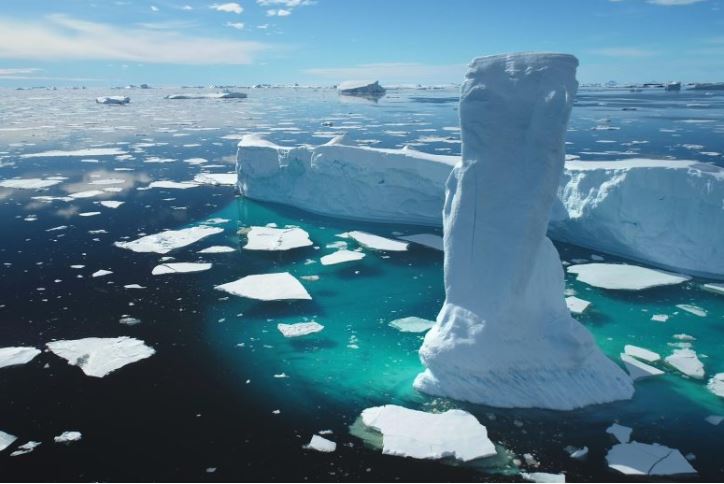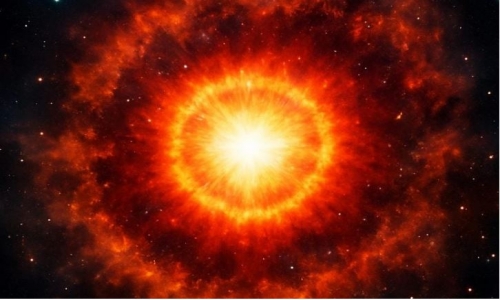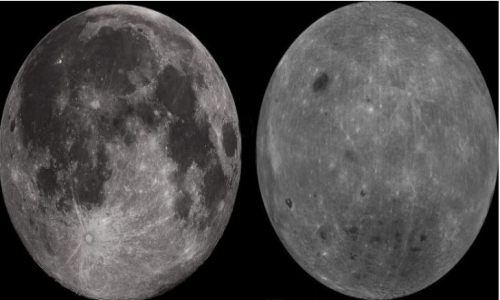


 11:17:2
11:17:2  2025-06-01
2025-06-01  878
878

Even if humanity manages to reverse climate change and cool the Earth back down to the 1.5°C target, glaciers around the world are already on a path to centuries of continued melting.
New projections show that temporarily overshooting this limit—even up to 3°C—would lock in severe and irreversible glacier loss. Mountain ranges from the Alps to the Andes would see a major decline in ice mass, fueling long-term sea-level rise and disrupting critical water supplies for communities.
Global Glacier Crisis: No Quick Recovery
New research shows that mountain glaciers around the world are likely locked into centuries of decline, even if we manage to bring global temperatures back down to the 1.5°C target after exceeding it.
Led by scientists from the University of Bristol in the UK and the University of Innsbruck in Austria, the study is the first to model glacier changes worldwide all the way to the year 2500. The focus is on “climate overshoot” scenarios, where the planet temporarily warms well beyond the 1.5°C goal, reaching up to 3°C, before eventually cooling again.
Consequences of Climate Overshoot
Published on May 19 in Nature Climate Change, the findings reveal that overshooting the 1.5°C limit, even briefly, could cause glaciers to lose up to 16% more of their total mass compared to a world that never exceeds that threshold.
Dr. Fabien Maussion, co-author and Associate Professor in Polar Environmental Change at the University of Bristol, said the results are a clear warning. “Current climate policies are putting the Earth on a path close to 3°C. It’s clear that such a world is far worse for glaciers than one where the 1.5°C limit is held,” he explained.
“We aimed to discover whether glaciers can recover if the planet cools again. It’s a question many people ask—will glaciers regrow in our lifetime, or that of our children? Our findings indicate sadly not.”
Record Heat and the 3°C Trajectory
Rising global temperatures now indicate a significant chance of overshooting of the Paris Agreement limits adopted a decade ago. For example, last year was the hottest year ever recorded on Earth and the first calendar year to exceed the 1.5°C mark.
The climate scientists assessed future glacier evolution under a strong overshoot scenario in which global temperatures continue rising to 3.0°C by around 2150, before falling back to 1.5°C by 2300 and stabilising. This scenario reflects a delayed net-zero future, in which negative emission technologies like carbon capture are only deployed after critical warming thresholds have been exceeded.
Sea-Level Rise and Glacier Mass Loss
The results show glaciers would fare much worse than in a world where temperatures stabilise at 1.5°C without overshooting, with an additional 16% of glacier mass being lost by 2200, and 11% more by 2500, on top of the 35% already committed to melting even at 1.5°C. This extra meltwater eventually reaches the ocean, contributing to even greater sea-level rise.
The research used a pioneering open-source model developed at the University of Bristol and partner institutions, which simulates past and future changes in all of the world’s glaciers, excluding the two polar ice sheets. It was combined with novel global climate projections produced by the University of Bern in Switzerland.
Long-Term Impacts on Mountain Glaciers
Lead author Dr. Lilian Schuster, a researcher at the University of Innsbruck, said: “Our models show it would take many centuries, if not millennia, for the large polar glaciers to recover from a 3°C overshoot. For smaller glaciers such as those in the Alps, the Himalaya, and the Tropical Andes, recovery won’t be seen by the next generations but is possible by 2500.”
Glacier meltwater in these mountain regions is vital to downstream communities, especially during dry seasons. When glaciers melt, they temporarily release more water, a phenomenon known as glacier ‘peak water’.
Dr. Schuster added: “If glaciers regrow, they start storing water again as ice – and that means less water flows downstream. We call this effect ‘trough water’, in contrast to peak water. We found that roughly half of the basins we studied will experience some form of trough water beyond 2100. It’s too early to say how much impact this will have, but our study is a first step toward understanding the many and complex consequences of climate overshoots for glacier-fed water systems and sea-level rise.”
This research was conducted as part of the EU-funded PROVIDE project, which investigates the impacts of climate overshoots on key sectors around the world.
Irreversible Change and a Call to Action
Dr. Maussion said: “Overshooting 1.5°C, even temporarily, locks in glacier loss for centuries. Our study shows that much of this damage cannot simply be undone, even if temperatures later return to safer levels. The longer we delay emissions cuts, the more we burden future generations with irreversible change.”
Reality Of Islam |
|

Astronomers

Cosmologist

Scientists
 9:3:43
9:3:43
 2018-11-05
2018-11-05
10 benefits of Marriage in Islam
 7:5:22
7:5:22
 2019-04-08
2019-04-08
benefits of reciting surat yunus, hud &
 9:45:7
9:45:7
 2018-12-24
2018-12-24
advantages & disadvantages of divorce
 11:35:12
11:35:12
 2018-06-10
2018-06-10
 6:0:51
6:0:51
 2018-10-16
2018-10-16
bahlool & the throne of haroun rashid
 8:20:35
8:20:35
 2018-06-21
2018-06-21
 12:10:56
12:10:56
 2022-11-17
2022-11-17
 7:59:14
7:59:14
 2018-06-21
2018-06-21
 10:55:53
10:55:53
 2022-06-13
2022-06-13
 7:6:7
7:6:7
 2022-03-21
2022-03-21
 4:25:57
4:25:57
 2023-02-11
2023-02-11
 5:58:12
5:58:12
 2021-12-18
2021-12-18
 5:41:46
5:41:46
 2023-03-18
2023-03-18
| LATEST |